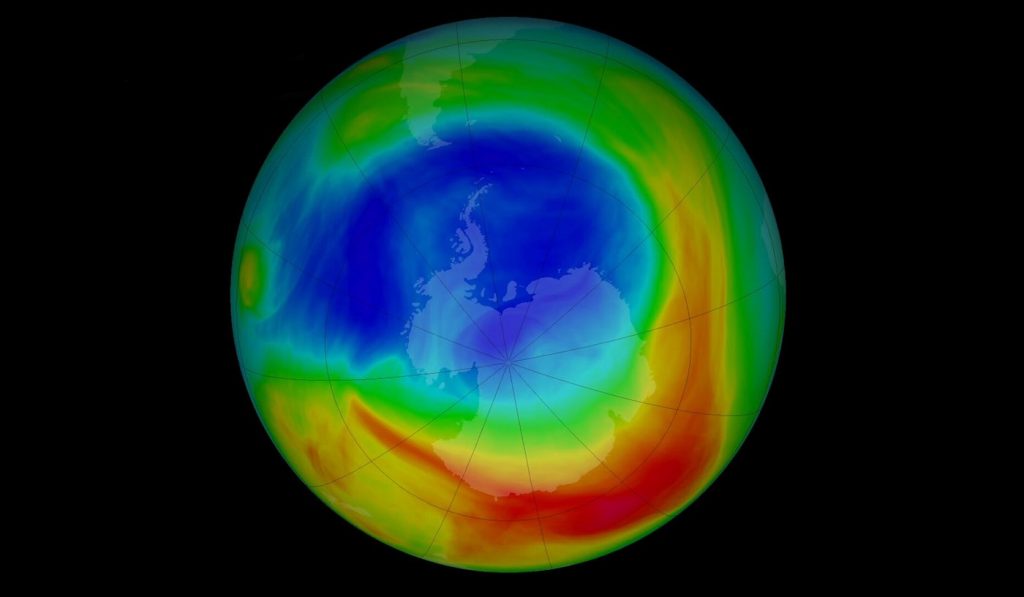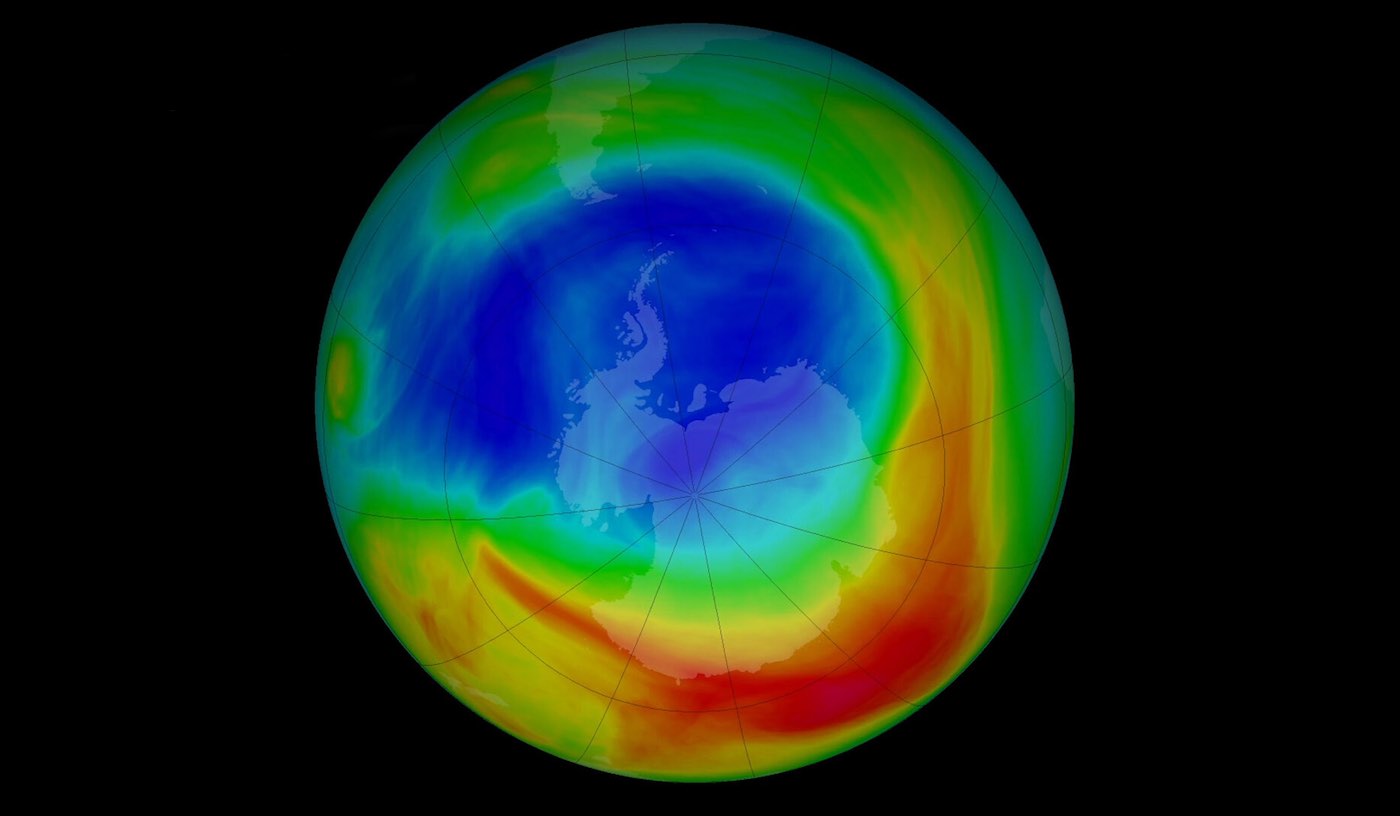
Scientists have estimated that at current rates, the hole in the ozone layer will close around 2070.
Levels of chemical emissions from refrigeration and air conditioning have fallen and continue to fall, leading the scientists at the National Oceanic and Atmospheric Administration who measure the ozone hole every year to conclude its days are numbered.
It was the first warning humanity received of its effects on the climate. In 1987, scientists found that certain chemicals were blowing open a hole in the ozone layer of the atmosphere which protects life from the Sun’s harmful radiation.
Ever year, a hole opens in the ozone layer opens above Antarctica that’s bigger than the continent. It usually forms during August and reaches maximum size during October. By December it begins closing again.
SIMILAR: Temperature Analysis Shows UN Climate Goals ‘Within Reach’ Thanks to International Pledges
All 197 parties to the United Nations signed onto the Montreal Protocol to reduce the emission of these chemicals, which today remains the only time in history a treaty received unanimous participation.
It is also certainly one of the most effective treaties that has ever gone into effect, as atmospheric concentrations of the refrigerants have declined 50% since the 1980s.
READ ALSO: EU Smashes 2020 Climate Target, Records 34% Drop in Emissions to Lowest Level Since 1990
Now, 35 years later, the NOAA has concluded that size of this hole is getting smaller and smaller as concentrations of the airborne chemicals diminish year upon year. The agency recently estimated that the hole could close for good around 2070.
As yearly hysteria regarding climate change continues to ramp up around the world, the news is a major sign that not only are things not simply becoming worse, but that this “significant milestone” as the NOAA scientists described it, is a sign that societies can develop in ways that won’t upset the natural balance of the Earth’s systems.
SHARE This Major Milestone On Social Media…




















